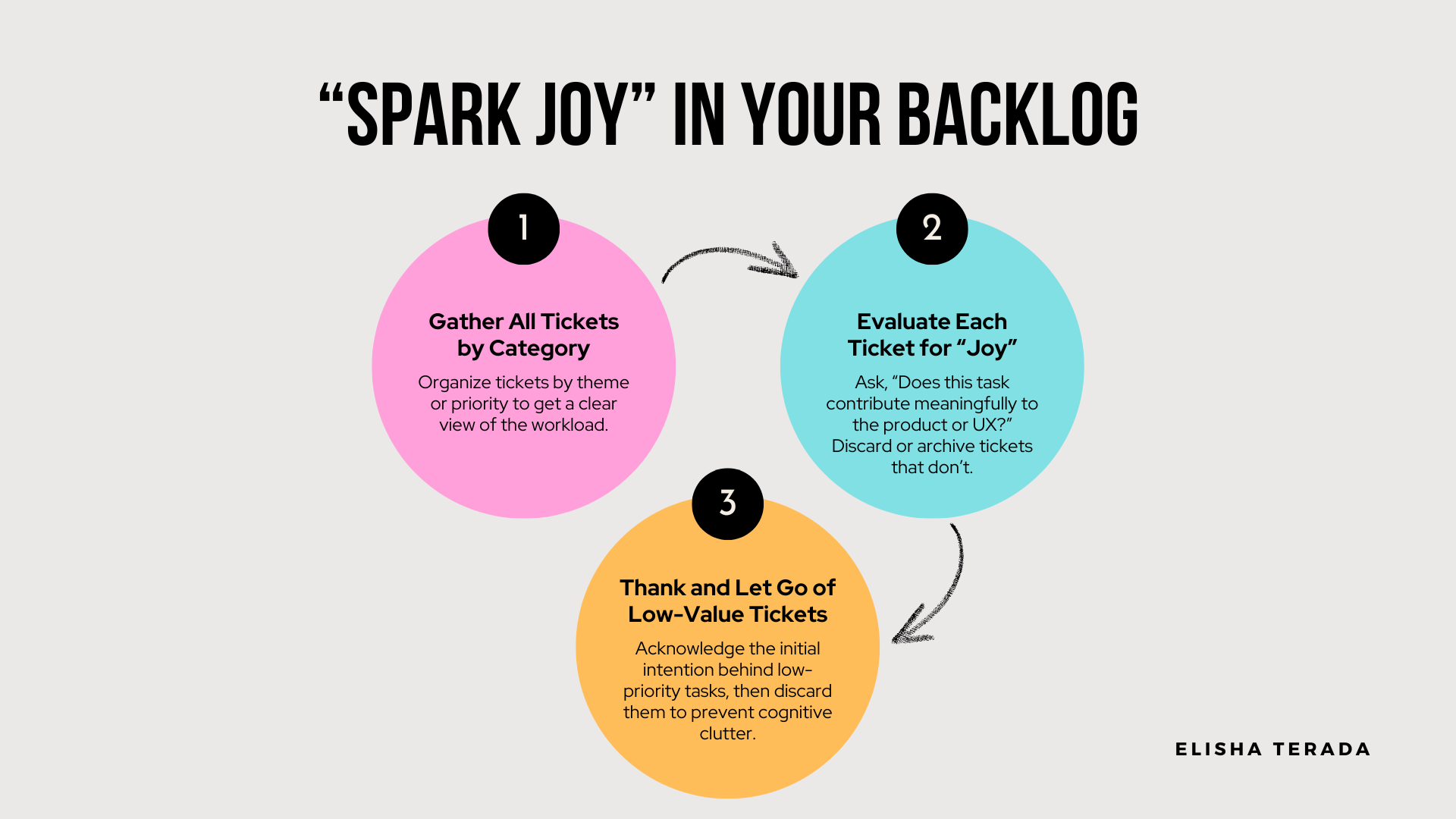“Spark Joy” in Your Backlog: Applying Marie Kondō’s Joy Principle to Software Teams
Transform your backlog with the KonMari Method! Discover how 'discard first, then organize' can help software teams focus on high-value tasks, boosting productivity and engagement by keeping only what 'sparks joy.' Clear the clutter, sharpen your focus, and deliver impactful results.

Ever feel like your backlog is an endless pile of "maybe someday" tasks? Inspired by Marie Kondō's popular book, The Life-Changing Magic of Tidying Up, this edition explores how her core principles—discard first, then organize—can bring clarity to software development backlogs. Just as Marie recommends keeping only what “sparks joy,” software teams can use this philosophy to focus on tasks that truly matter, boosting productivity and engagement.
Applying “Discard First, Then Organize” to Software Teams
Let’s see how Marie Kondō’s method can streamline software processes, improve team focus, and add intentionality to development efforts:
- Product Owners and Joyful Prioritization
Marie asks, “Does this spark joy?” Similarly, Product Owners can ask, “Does this task add value to our users or team?” By regularly clearing out low-priority, ambiguous tickets, they can channel energy into high-impact work that aligns with the team’s mission. This approach not only increases focus but ensures that each feature or task contributes directly to the product's success. - Project Managers and Efficient Backlog Maintenance
Scrum Masters or Project Managers often get bogged down reviewing tickets with unclear requirements. Instead of revisiting these repeatedly, a KonMari-inspired approach would encourage regular “decluttering” of the backlog. Removing tasks that aren’t clearly defined or impactful streamlines sprint planning, allowing teams to focus on the work that brings genuine value to users. - Agile Development Teams and High-Quality Work
An overstuffed backlog is cognitively draining. When Agile teams focus on fewer, well-defined tasks, they can pour their energy into producing high-quality work. The joy of working on something meaningful can lead to better code, enhanced problem-solving, and a stronger sense of accomplishment among team members.
Steps for Effective “Backlog Discarding”
Taking cues from the KonMari Method, here’s how software teams might approach backlog management:
- Gather All Tickets by Category: Organize tickets by theme or priority to get a clear view of the workload.
- Evaluate Each Ticket for Joy: Ask, “Does this task contribute meaningfully to the product or user experience?” Discard or archive tickets that don’t.
- Thank and Let Go of Low-Value Tickets: Acknowledge the initial intention behind low-priority tasks, then discard them to prevent cognitive clutter.
A Shift in Team Dynamics
By embracing “discard first, then organize,” teams can expect several positive shifts:
- More Engagement: A clear, prioritized backlog leads to meaningful work, boosting team morale.
- Higher Velocity: Focusing on high-impact tasks accelerates progress.
- Improved Decision-Making: Regular prioritization hones decision-making skills, making backlog refinement a smoother process.
Final Thoughts
Applying the KonMari mindset to software development isn't about minimalism for its own sake—it’s about optimizing focus and joy in the work. By discarding tasks that don’t align with product goals, teams can free up mental space to tackle what truly matters.
Have you ever “decluttered” your backlog to focus on what brings joy and value? What methods worked for you?
